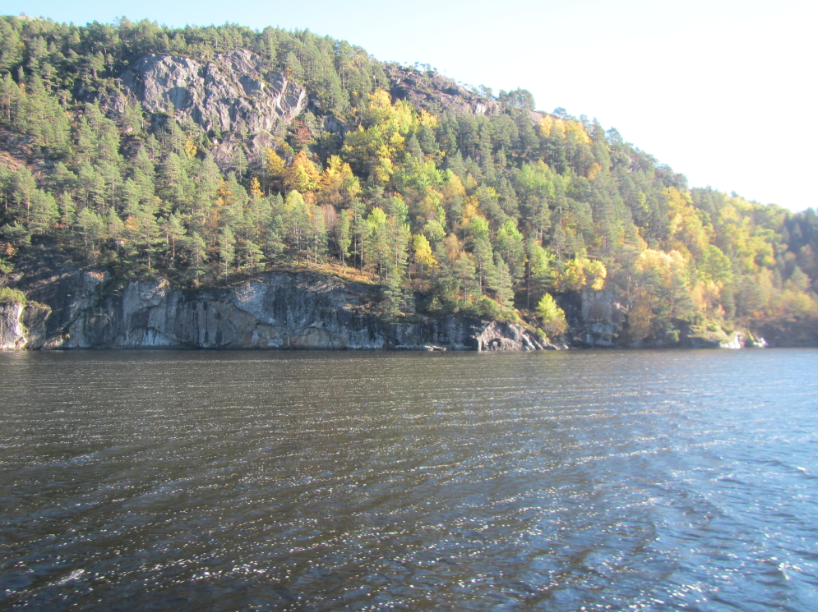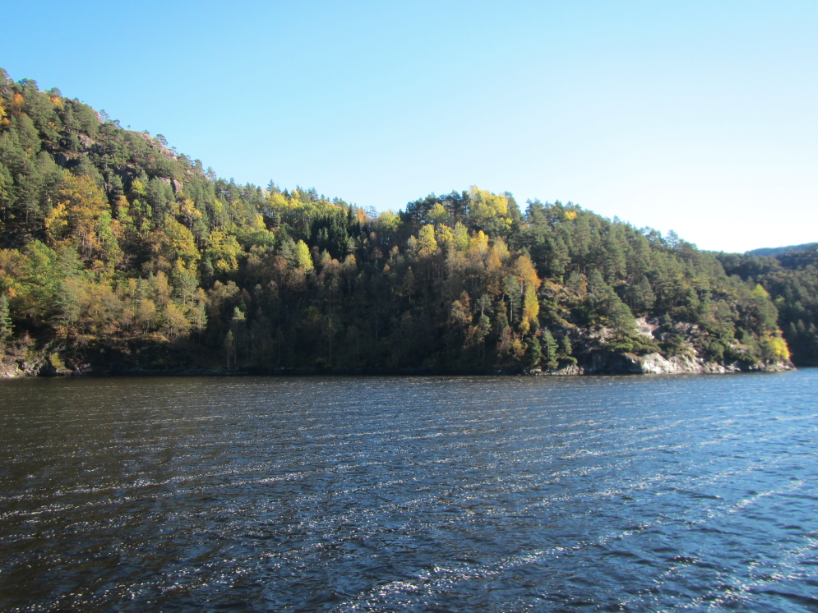
Langmuir circulation
We think we observed Langmuir circulation, but we don’t understand the mechanism causing it.
Recently, my friend Leela came to visit Bergen and we went on a fjord cruise to make the most of a sunny October day. We observed foam streaks on the fjord. The structures were long and persistent, and being the oceanographers we are, of course we knew that they had to have been caused by Langmuir circulation.
But then we started wondering about the mechanism driving the Langmuir circulation. Textbook knowledge tells us that Langmuir cells are spiraling rows with convergences (the foamy stripes) and divergences (in between the foamy stripes) at the surface. They are, according to common knowledge, caused by wind that has persistently blown over the surface for more than some 10 hours, and by Ekman processes. Plus there might be some interaction with waves.

More Langmuir circulation
But that’s about where my knowledge ends, and I have absolutely no mechanistic understanding of Langmuir circulation. Literature research was unsuccessful (at least in the period of time I was willing to spend on this), a quick poll of my colleagues didn’t help, so now I am turning to you, dear readers: Do you have a simple mechanism for me that explains Langmuir circulation? Please help!

#BergenWaveWatching: “Remote sensing” - Adventures in Oceanography and Teaching says:
[…] Langmuir circulation in Østerfjorden, described here. […]
Foam stripes mystery — closer to figuring out what’s going on? | Mirjam S. Glessmer says:
[…] down the other direction. I’ve had the hypothesis that they might be somehow related to Langmuir circulation, but in any case there must be some kind of convergence zone […]
Langmuir circulation, take 2 | says:
[…] complaining about how I didn’t have mechanistic understanding of Langmuir circulation recently, and how I was too lazy to do a real literature search on it, my friend Kristin sent me a paper […]